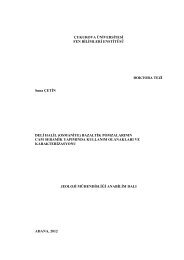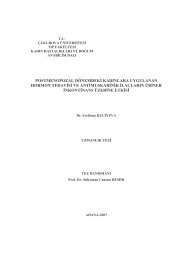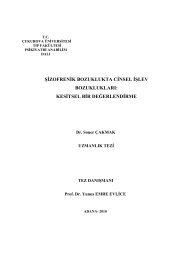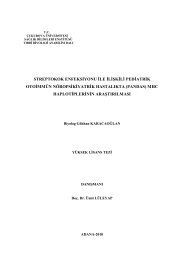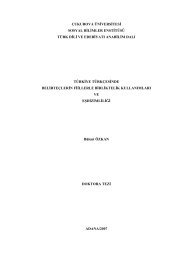ÇUKUROVA UNIVERSITY INSTITUTE OF NATURAL AND APPLIED ...
ÇUKUROVA UNIVERSITY INSTITUTE OF NATURAL AND APPLIED ...
ÇUKUROVA UNIVERSITY INSTITUTE OF NATURAL AND APPLIED ...
You also want an ePaper? Increase the reach of your titles
YUMPU automatically turns print PDFs into web optimized ePapers that Google loves.
3. FUNDAMENTALS <strong>OF</strong> DVR Mustafa İNCİ<br />
3.2.2. Use of Converters in DVR<br />
Numerous circuit topologies which are used for different functions are<br />
available for the DVR. These are: inverters, rectifiers, AC-AC converters and DC-<br />
DC converters.<br />
3.2.2.1. Inverters<br />
The most common inverter topologies are the two- or three-level three-phase<br />
converter where the dc-side capacitor(s) is connected alternately to all ac phases. The<br />
purpose of this capacitor is to mainly absorb harmonic ripple and, hence, it has a<br />
relatively small energy storage requirement, particularly when operating in balanced<br />
conditions. The size of this capacitor has to be increased, if needed, to provide<br />
voltage support in unbalanced conditions. Also, since the capacitor is shared between<br />
the three phases, sag on only one phase may cause a distortion in the injected current<br />
waveforms on the other phases (Al-Hadidi et al., 2008).<br />
Another popular converter topology is the H-bridge cascade inverter. A single<br />
phase of this converter is shown in Figure 3.3. Converters with this topology are<br />
suitable in power systems applications due to their ability to synthesize waveforms<br />
with reduced lower order harmonics and to attain higher voltages with a limited<br />
maximum device rating. The principal of operation for this topology is that each<br />
capacitor can be connected by means of the insulated-gate bipolar transistor (IGBT)<br />
switches so that its voltage contributes positively or negatively or not at all to the<br />
output waveform. This makes the control more complex in comparison with<br />
conventional two- or three-level converters. However, in contrast to such<br />
conventional topologies, the multilevel offers the following significant advantages<br />
(Al-Hadidi et al., 2008).<br />
1) Modularized circuit layout and packaging are possible because each level<br />
has the same structure. Increasing or reducing the number of modules permits the<br />
converter to be designed for any arbitrary voltage level in a straightforward manner.<br />
17



